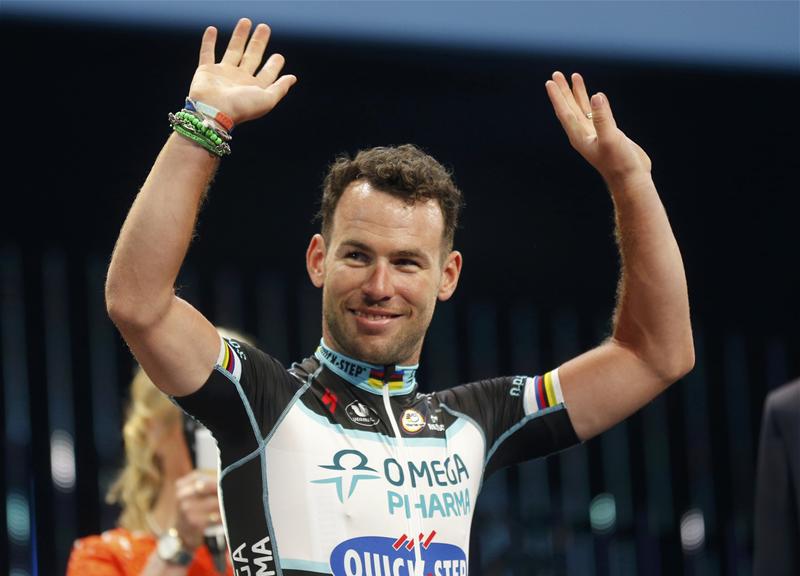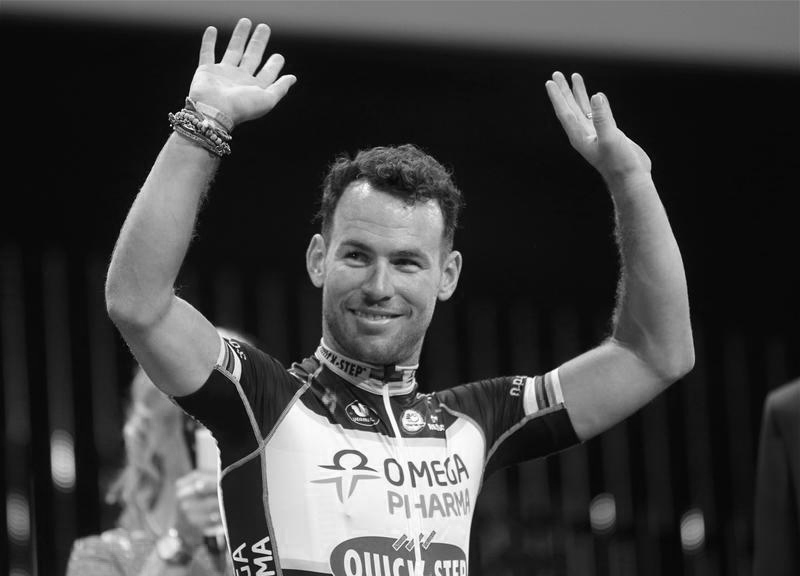Mark Cavendish’s Shoulder Injury
It was to be the pinnacle of British Cycling. A first ever Maillot Jaune for Mark Cavendish and on British soil no less. Picture the scene Рthis is the sort of romance that Le Tour is built upon. Stage one of this yearsՠTour offered the rare chance for a sprinter to grasp the Yellow Jersey – a jersey which sadly, like last year ended on the back of Marcel Kittel. For Cavendish, the dream would not be a reality.
It all started in the picturesque grounds of Harewood House on the outskirts of Leeds. The Duke and Duchess of Cambridge, along with Prince Harry, cut the tape to begin the race to the sound of La Marsillaise, a hairs’ breadth away from Chris Froome and Geraint Thomas – the British contingent at Team Sky.[1]
With 2.5 million people lining the streets of Yorkshire, the aches and pains of Englandֳ World Cup and Andy Murrayֳ Wimbledon defeat seemed light-years away. The people had spoken.Yellow Fever (yes, this is hilarious) was about to take over.
The Race
42-year old Jens Voigt might be old enough to have fathered some of the young riders in the peloton, but that certainly didnִ stop the German taking the polka-dot jersey on day one. Voigt, who has been a professional for 16 years, broke through the age barrier and steered a breakaway group at full swing across the roads of the Yorkshire Dales. Though later admitting on his bicycling.com blog to be Ӳeally sufferingӼ/em> for his efforts on day one, he single handily created a spectacle for the folk of Yorkshire as the seemingly immovable German swept through the course to raptures of applause.
For the home crowd however, even the likes of Chris Froome and Geraint Thomas were a distant thought. Earning national treasure status like his countrymen Chris Hoy and Bradley Wiggins, Mark Cavendishֳ tour came to a spectacular end – just not the one that he may have hoped for. During the sprint stage of the race Omega-Pharma-Quickstep battled to lead out their main man across the line. Struggling to join in the breakout group and under pressure from main rival Marcel Kittell of Giant-Shimano, Cavendish found himself trying to break into a space that simply wasnִ there.
And so, as we all saw on Saturday The Manx Missileֳ tour was over a mere 190km from whence it began as Kittel took home the first stage Maillot Jaune for a second consecutive year.[2]
What Happened?
Following the close of stage one, there were concerns that Mark Cavendish’s shoulder injury would stop him from racing from the following day which sadly, for the 29-year old, turned out to be the case.
Clutching his arm as he crossed the line a few minutes after the peloton in Harrogate, the sprinter looked in agony as he received an extended ovation from the local crowd. What happens next depends on the projected recovery process. Mark Cavendish’s shoulder injury was one of the well-known sprinters ailments. The high speeds and high competition for the Green Jersey are always exceptional, with Cavendishֳ team leading him out and defending against attacks from all corners.
The Manx Missile is of course no stranger to tumbles. Rather it is often jested within cycling circles that he either շins the race or crashesծ Even so, the sprinter will be absurdly disappointed with an almost rookie mistake on Saturday afternoon which left him with a dislocated shoulder following the impact of his body and the tarmac.[3]
What is a dislocated shoulder and how can it be treated?
A dislocated shoulder occurs simply when the humerus bone becomes separated from the scapula. When Cavendish flipped over on Saturday afternoon, his humerus popped out due to the impact of his body over the tarmac.[4] Not fun. In Cavֳ case, the acute symptom would have been the outright agony and complete loss of strength to the area which was notably apparent by a facial expression that became widely circulated in the media. Complete despair. Though a misplaced bone is never a good thing, one of the main issues with dislocation manifest as a direct result of the injury. If the injury consists of merely a dislocation, a simple recovery process including a shoulder support strap may be sufficient.
If however, the injury is more serious a more invasive approach to recovery must take place. For example, when the bone becomes dislodged from its joint it can break at the top. This not only causes double the amount of pain but also a far more intensive recovery process. Check back here soon for a detailed analysis of shoulder recovery!
If that wasnִ enough Рtendons such as the rotator cuff can also become partially or completely torn, a condition which is not only painful but can become chronic if left untreated. Though acute symptoms can only be prevented by not having the injury in the first place, a proper rehabilitation can assist in the prevention of chronic conditions which can, in Cavendishֳ case, need surgery. For intensive recovery cryotherapy aids such as the Donjoy ArcticFlow have been proven to relieve shoulder swelling and discomfort during the rehabilitation of post-operative procedures.
For the Manx Missile, his Tour, and Commonwealth Games are clearly over as he begins a six week recovery process.
Author: Toby Cryne
[1] http://www.express.co.uk/news/royal/486922/Kate-and-William-to-start-Tour-de-France-in-Yorkshire-today
[2] http://www.telegraph.co.uk/sport/othersports/cycling/tour-de-france/10948659/Mark-Cavendish-crashes-in-Yorkshire-Tour-de-France-finish-as-Marcel-Kittel-wins-opening-stage.html
[3] http://www.espn.co.uk/cycling/sport/story/321719.html
[4] http://www.nhs.uk/conditions/dislocated-shoulder/Pages/Introduction.aspx


